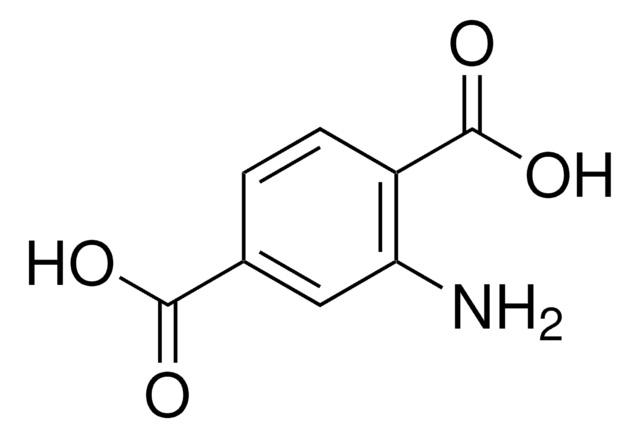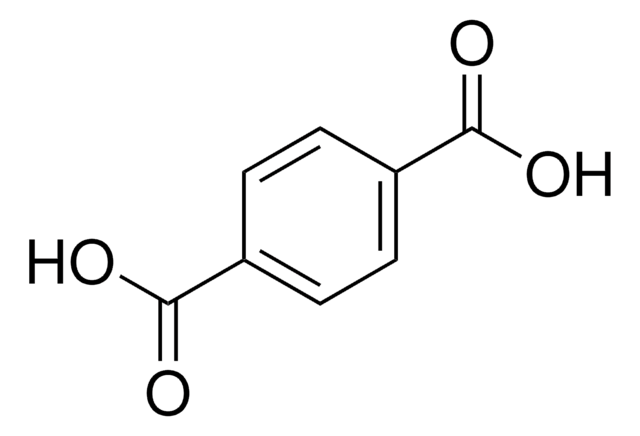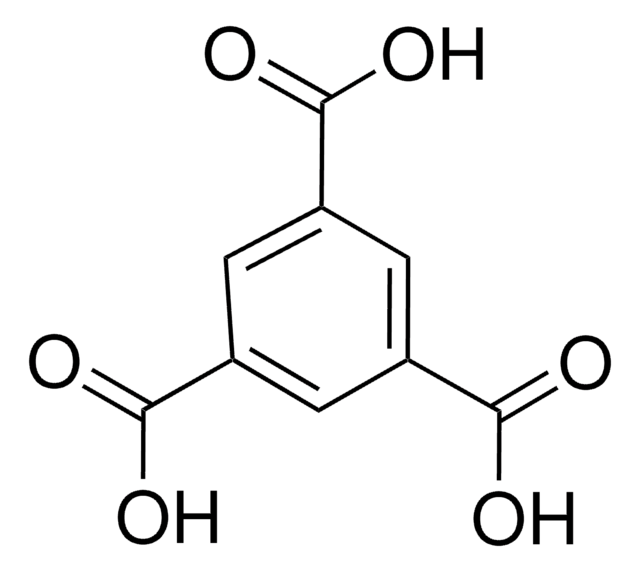221880
Zirconium(IV) chloride
≥99.5% trace metals basis
Synonyme(s) :
Tetrachlorozirconium, Zirconium tetrachloride
About This Item
Produits recommandés
Pression de vapeur
1 mmHg ( 190 °C)
Niveau de qualité
Pureté
≥99.5% trace metals basis
Forme
powder
Pertinence de la réaction
reagent type: catalyst
core: zirconium
Caractéristiques du produit alternatif plus écologique
Catalysis
Learn more about the Principles of Green Chemistry.
sustainability
Greener Alternative Product
Impuretés
≤5000.0 ppm Trace Metal Analysis
Température de transition
sublimation point 331 °C
Densité
2.8 g/mL at 25 °C (lit.)
Application(s)
battery manufacturing
Autre catégorie plus écologique
, Aligned
Chaîne SMILES
Cl[Zr](Cl)(Cl)Cl
InChI
1S/4ClH.Zr/h4*1H;/q;;;;+4/p-4
Clé InChI
DUNKXUFBGCUVQW-UHFFFAOYSA-J
Vous recherchez des produits similaires ? Visite Guide de comparaison des produits
Description générale
Application
Direct amide formation from unactivated carboxylic acids and amines
Mention d'avertissement
Danger
Mentions de danger
Classification des risques
Met. Corr. 1 - Skin Corr. 1B
Risques supp
Code de la classe de stockage
8B - Non-combustible corrosive hazardous materials
Classe de danger pour l'eau (WGK)
WGK 3
Point d'éclair (°F)
Not applicable
Point d'éclair (°C)
Not applicable
Équipement de protection individuelle
Eyeshields, Faceshields, Gloves, type P3 (EN 143) respirator cartridges
Faites votre choix parmi les versions les plus récentes :
Déjà en possession de ce produit ?
Retrouvez la documentation relative aux produits que vous avez récemment achetés dans la Bibliothèque de documents.
Les clients ont également consulté
Notre équipe de scientifiques dispose d'une expérience dans tous les secteurs de la recherche, notamment en sciences de la vie, science des matériaux, synthèse chimique, chromatographie, analyse et dans de nombreux autres domaines..
Contacter notre Service technique












